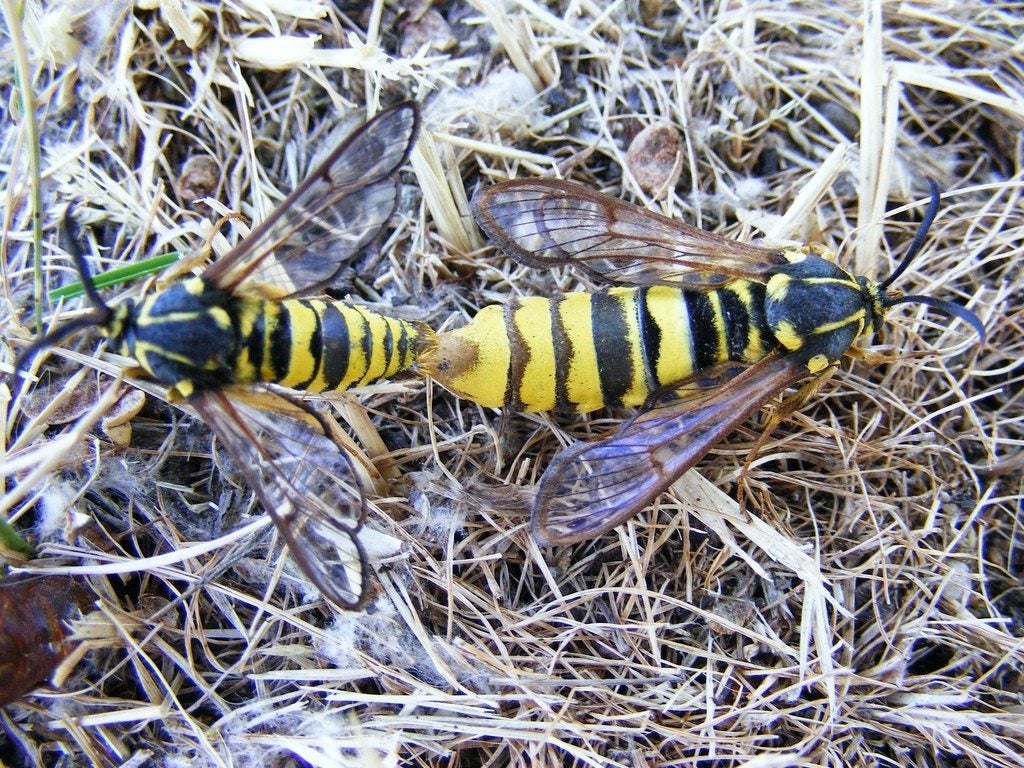Crown Borer Management: Treatment And Control Of Crown Borers


When your garden starts to look a little scraggly and plants begin to die, any good gardener will check them all over for clues to the perpetrator. When you find holes in the base of trunks or canes with sawdust-like material coming out, your problem is most likely crown borers. Let's find out more about crown borer damage and control.
What are Crown Borers?
You may not realize you're looking for crown borer information when you search Google, trying to discover the identity of the creature drilling holes in your caneberries and ornamental plants, but as it turns out, this damage is their most distinctive sign. The larvae of these clearwing moths tunnel their way into plants, eating as they go. The life cycle of crown borer moths begins when adults emerge in June and July to lay their eggs on wounded or stressed plants, either on the bark or on leaves nearby. The larvae hatch and make their way to the crown, forming an overwintering area at the base of the plant that may have a blistered appearance. In their first spring, crown borer larvae begin to tunnel into the plant's crown, feeding until winter approaches, then making for the root system. After overwintering as a larvae, they return to the crown and feed ravenously. Near the beginning of the second summer, these larvae pupate for two to four weeks, then emerge as adults to start the cycle again.
Crown Borer Management
Crown borer damage can be very non-specific, causing plants to wilt or appear sickly. Often the sawdust-like frass is the only sign of what's going on inside the crown. Adults, which look similar to black and yellow wasps, can be seen for short periods, but may not make themselves obvious in the landscape. It is because of this, control of crown borers is primarily defensive --infested plants should be removed as soon as possible to prevent the borers from spreading further. Prevent borers in new plantings by destroying wild brambles and other infected plants in the area and replanting with certified pest-free nursery stock. Borers are often attracted to stressed plants, so proper care, water, and pruning is vital to prevention. Familiarize yourself with the needs of each of your landscape plants and make sure to water them adequately as summer temperatures rise. Regular pruning and shaping to remove redundant branches and open the inside of the canopy is recommended.
Gardening tips, videos, info and more delivered right to your inbox!
Sign up for the Gardening Know How newsletter today and receive a free copy of our e-book "How to Grow Delicious Tomatoes".

Kristi Waterworth was a regular contributor to Gardening Know How for many years, answering countless queries on plant pests and diseases.
-
 Get Ready For A Summer Of Hummers! Grow These Full Sun Hummingbird Plants and Flowers
Get Ready For A Summer Of Hummers! Grow These Full Sun Hummingbird Plants and FlowersIf you’re lucky enough to enjoy a sunny backyard, make sure you are maxing out on your pollinator opportunities and grow these full sun hummingbird plants and flowers
By Tonya Barnett
-
 12 Lush Alternatives To A Lawn For Sustainable Spaces
12 Lush Alternatives To A Lawn For Sustainable SpacesAlternatives to a lawn are beautiful and also beneficial to your local ecosystem and its pollinators. Explore our top picks for plants to replace grass.
By Tonya Barnett